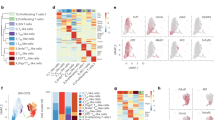Abstract
Cellular proliferation and survival are modulated by the expression of specific genes. Cytokine response gene 8 (CR8), which was originally cloned as an IL-2-induced gene in human T lymphocytes, encodes a basic helix–loop–helix (bHLH) transcription factor. The CR8 gene product is highly conserved among human, mouse and rat, and contains sequence motifs that distinguish it from other bHLH families. The CR8 gene is ubiquitously expressed, and CR8 gene expression is induced by both growth-promoting as well as growth-inhibitory stimuli. As bHLH proteins have been found to regulate both the G1-S phase cell cycle transition, as well as cellular survival, the effects of CR8 on these processes were investigated. Ectopic CR8 expression in asynchronous U2OS cell cultures reduces the percentage of cells in the cell cycle S phase, and also slows the entry of G1-synchronized cells into S phase. The prolonged G1 interval correlates with impaired elevation of cyclin E protein and prolonged p21 protein expression in G1. CR8 expression also protects U2OS cells from serum-withdrawal induced apoptosis. These results indicate that CR8 is an important modulator of both the G1-S phase cell cycle transition, and cellular survival.
This is a preview of subscription content, access via your institution
Access options
Subscribe to this journal
Receive 50 print issues and online access
$259.00 per year
only $5.18 per issue
Buy this article
- Purchase on Springer Link
- Instant access to full article PDF
Prices may be subject to local taxes which are calculated during checkout








Similar content being viewed by others
References
Barone M, Pepperkok R, Peverali F, Philipson L . 1994 Proc. Natl. Acad. Sci. USA 91: 4985–4988
Beadling C, Johnson KW, Smith KA . 1993 Proc. Natl. Acad. Sci. USA 90: 2719–2723
Boudjelal M, Taneja R, Matsubara S, Bouillet P, Chambon P . 1997 Genes Dev. 11: 2052–2065
Condorelli GL, Tocci A, Botta R, Facchiano F, Testa U, Vitelli L, Valtieri M, Croce CM, Peschle C . 1997 Mol. Cell. Biol. 17: 2954–2969
Darzynkiewicz Z, Gong J, Juan G, Ardelt B, Traganos F . 1996 Cytometry 25: 1–13
Dear TN, Hainzl T, Follo M, Nehls M, Wilmore H, Matena K, Boehm T . 1997 Oncogene 14: 891–898
Deed JW, Bianchi SM, Atherton GT, Johnston D, Santibanez-Koref M, Murphy JJ, Norton JD . 1993 Oncogene 8: 599–607
Deed RW, Hara E, Atherton GT, Peters G, Norton JD . 1997 Mol. Cell. Biol. 17: 6815–6821
Fan W, Richter G, Cereseto A, Beadling C, Smith KA . 1999 Oncogene 18: 6573–6582
Fisher AL, Ohsako S, Caudy M . 1996 Mol. Cell. Biol. 16: 2670–2677
Florio M, Hernandez M-C, Yang H, Shu H-K, Cleveland JL, Israel MA . 1998 Mol. Cell. Biol. 18: 5435–5444
Gong J, Li X, Traganos F, Darzynkiewicz Z . 1994 Cell. Prolif. 27: 357–371
Gong J, Traganos F, Darzynkiewicz Z . 1993 Int. J. Oncol. 3: 1037–1042
Gullberg M, Smith KA . 1986 J. Exp. Med. 163: 270–284
Halevy O, Novitch BG, Spicer DB, Skapek SX, Rhee J, Hannon GJ, Beach D, Lassar AB . 1995 Science 267: 1018–1021
Hara E, Hall M, Peters G . 1997 EMBO J. 16: 332–342
Inuzuka H, Nanbu-Wakao R, Masuho Y, Muramatsu M, Tojo H, Wakao H . 1999 Biochem. Biophys. Res. Comm. 265: 664–668
Leroy-Viard K, Vinit M-A, Lecointe N, Jouault H, Hibner U, Romeo P-H, Mathieu-Mahul D . 1995 EMBO J. 14: 2341–2349
Maestro R, Dei Tos AP, Hamamori Y, Krasnokutsky S, Sartorelli V, Kedes L, Doglioni C, Beach DH, Hannon GJ . 1999 Genes Dev. 13: 2207–2217
Massari ME, Murre C . 2000 Mol. Cell. Biol. 20: 429–440
Moreno S, Nurse P . 1994 Nature 367: 236–242
Murre C, Bain G, van Dijk MA, Engel I, Furnari BA, Massari ME, Matthews JR, Quong MW, Rivera RR, Stuiver MH . 1994 Biochim. Biophys. Acta 1218: 129–135
Murre C, McCaw PS, Baltimore D . 1989 Cell 56: 777–783
Niculescu AB, Chen X, Smeets M, Hengst L, Prives C, Reed SI . 1998 Mol. Cell. Biol. 18: 629–643
Norton JD, Atherton GT . 1998 Mol. Cell. Biol. 18: 2371–2381
Norton JD, Deed RW, Craggs G, Sablitzky F . 1998 Trends Cell Biol. 8: 58–65
Peverali FA, Ramqvist T, Saffrich R, Pepperkok R, Barone MV, Philipson L . 1994 EMBO J. 13: 4291–4301
Prabhu S, Ignatova A, Park ST, Sun X-H . 1997 Mol. Cell. Biol. 17: 5888–5896
Rossner MJ, Dorr J, Gass P, Schwab MH, Nave K-A . 1997 Mol. Cell. Neurosci. 9: 460–475
Sasai Y, Kageyama R, Tagawa Y, Shigemoto R, Nakanishi S . 1992 Genes Dev. 6: 2620–2634
Shen M, Kawamoto T, Yan W, Nakamasu K, Tamagami M, Koyano Y, Noshiro M, Kato Y . 1997 Biochem. Biophys. Res. Commun. 236: 294–298
Sherr CJ . 1994 Cell 79: 551–555
Sherr CJ . 1996 Science 274: 1672–1677
Sun H, Taneja R . 2000 Proc. Acad. Sci. USA 97: 4058–4063
Acknowledgements
This work was supported by National Institutes of Health, NIAID grants □num;RO1 A1 32031-24 and 1RO1 Al44207-O1A1.
Author information
Authors and Affiliations
Rights and permissions
About this article
Cite this article
Beadling, C., Cereseto, A., Fan, W. et al. Cytokine response gene 8 (CR8) regulates the cell cycle G1-S phase transition and promotes cellular survival. Oncogene 20, 1771–1783 (2001). https://doi.org/10.1038/sj.onc.1204212
Received:
Revised:
Accepted:
Issue Date:
DOI: https://doi.org/10.1038/sj.onc.1204212



